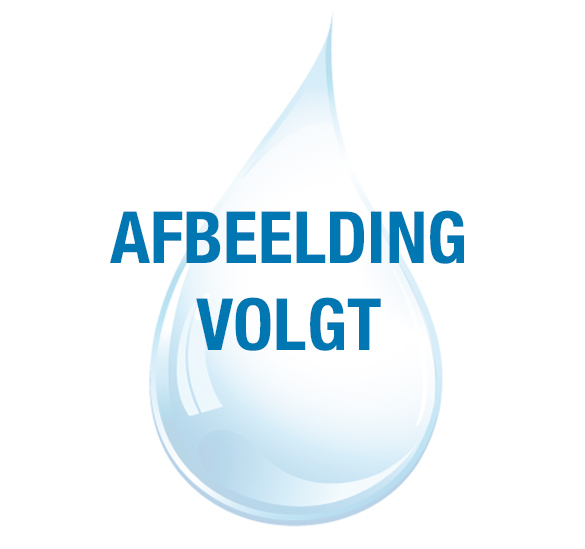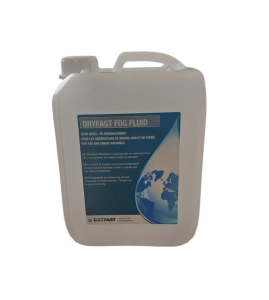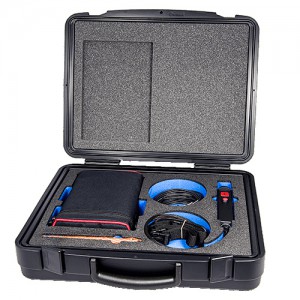Leak detection
Click here for more information about our leak detection dyes safety data sheets
When to use leak detection equipment?
People tend to associate leaks with major water damage, but there are other hidden dangers as well. This includes gas leaks and toxic fungus growth due to the moisture left behind after a leak.



Professional equipment



A wide range of high-quality measurement devices



Competitive pricing



Our certified staff can provide you and your employees with extensive training



Professional equipment



A wide range of high-quality measurement devices



Competitive pricing



Our certified staff can provide you and your employees with extensive training
Measurement methods and systems
The pulse current process
The working principle of the pulse current process is to apply a current to the film to be examined by connecting a ring cable with a positive pole to the sealing surface and an earthing cable with a negative pole to the underside of the seal.
Surface moisture acts as a conductor for the current supplied by the pulse generator and the direction of the current can be determined with a measuring rod and displayed on the pulse receiver as a direction indication towards the position of the leak. Our pulse current measurement system can be used regardless of whether or not the seal is fitted with gravel or covered by vegetation. The only requirement is sufficient moisture on the sealant layer.
Acoustic leak detection
In leaking pressure pipes, the rapid loss of water generates sound through friction.
- Firstly, it causes the pipe itself to vibrate. The acoustic signal transmitted by the pipe can then be amplified with impact sound microphones positioned at contact points away from the source (seals, hydrants, sockets).
- Secondly, water exiting the pipe from the leak directly produces sounds that reach the surface through the ground. These sounds can be amplified with ground microphones.
Leak detection with tracer gas
Thanks to the optional TS 810 SDI and LD6000 H2 hydrogen sensors, the T3000 and LD6000 are perfect for leak detection with type 95/5 forming gas, consisting of 95% nitrogen and 5% hydrogen.
Because of its specific structure, hydrogen permeates any material very quickly, such as soil, concrete or tiles. We can then pinpoint its exact origin with a hydrogen sensor connected to the measurement equipment.
Type 95/5 forming gas is non-toxic and non-flammable. This is why it can generally be used for leak detection without any problems even in sensitive environments.
In addition to compact manual sensors, a ground sensor with integrated suction pump is available for the LD6000. This allows for the smallest possible tracer gas concentrations to be detected. The ground sensor is perfectly suited for leak tightness testing or leak localisation in roof gardens, deeply positioned earthing cables and even asphalt coverings, etc.
Endoscopy
This technique is perfectly suited for tracing leaks in places that are extremely difficult to reach. Allowing you to perfectly map the situation below a shower tray or inside discharge pipes. This is due to the extremely thin gooseneck and camera.
Thermography
A thermographic camera allows for temperatures to be imaged. As a result, you can identify insulation errors and problems with pipes or electrical installations that are invisible to the naked eye. This technique has become increasingly popular over the years because it is the fastest, safest and cheapest analytical method and it helps avoid unnecessary demolition works. We offer inspection cameras by Trotec and FLIR
Leak tightness testing and leak detection with vapour
Leaks and faulty connections can be found quickly and easily by inserting vapour into piping networks, tank installations or domestic sanitary installations. The flue gas process allows for insulated flat roofs and terrace constructions to be inspected for leaks in a cost-effective way because the extremely dense white vapour is easy to see as it escapes through the leaks, even from a large distance and in large surfaces. In addition, flue gas detection is very well suited for intermediate measurements during the construction phase of complex flat roof constructions. Surfaces that will become difficult or impossible to access later on can be be inspected for leak tightness preventively to avoid structural damage due to leakage in advance.
Leak detection in buildings and pipe networks with UV-A
The use of artificial guidance markings (tracers) in complex, liquid-bearing pipes allows for the leak tightness of the surface to be inspected, and liquid distributions and gradients caused by leakage can be detected and analysed with ultraviolet light.
Other typical areas of application include inspection of leak tightness of water-bearing surfaces of flat roofs as well as inspection of gutters and storm drains.
Leak detection with material moisture measurement
Moisture concentration detection in materials can be used as an indicator of the source of the moisture problem and it is often applied in leak detection.
We offer various options such as the well-known calcium carbine measurement method as well as capacity, microwave and resistance measurement
Thermal bridge detection
Thermal bridges are a common cause of moisture problems. In order to detect these thermal bridges, we can use the aforementioned thermography as well as pyrometers combined with temperature/relative humidity meters with dew point registration or everything in one meter with a thermography or pyrometer and temperature/relative humidity function.
Localising pipes
The following methods are available for localising the wires:
- Passive wire localisation
In the passive mode, our SR-24 wire detector looks for electromagnetic “noise” in underground wiring systems. Electromagnetic signals can reach underground supply lines in several ways. Electric devices emit these signals to a certain degree into connected power lines, for example, or underground supply lines can act as antennae for high-capacity and low-frequency radio transmissions and, in turn, emit these signals. These power and radio frequencies can be passively detected at the associated field strength which allows for localisation of the utility line in question. - Active wire localisation
In this mode, the trajectory and position of an utility line is found by applying power via a transmitter, e.g. the ST-510, to actively localise the wire based on the selected frequency. - Trajectory localisation
The fibreglass cables of the localisation systems contain copper conductors that emit a localisable signal across the entire length of the cable when a transmitter is connected. One transmitter cable is connected to the LTS and the second is earthed.
- Point localisation
The Bowden cable head of the LTS devices is fitted with a probe that is easy to localise thanks to an extremely strong field. The transmitter is connected to the connection box of the LTS with two cables.
Probe mode
For localising the signal of a probe in pipes, cables or tunnels that are not conductive or cannot be localised in any other way. The SeeSnake camera system can be used for pipe inspections, where the Flexmitter sensor integrated into the camera head can be accurately localised with the SR-24. This combination also makes for a highly effective and accurate method for leak detection!




